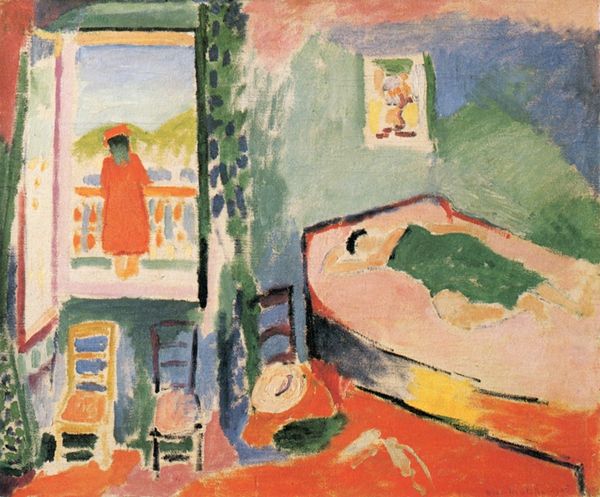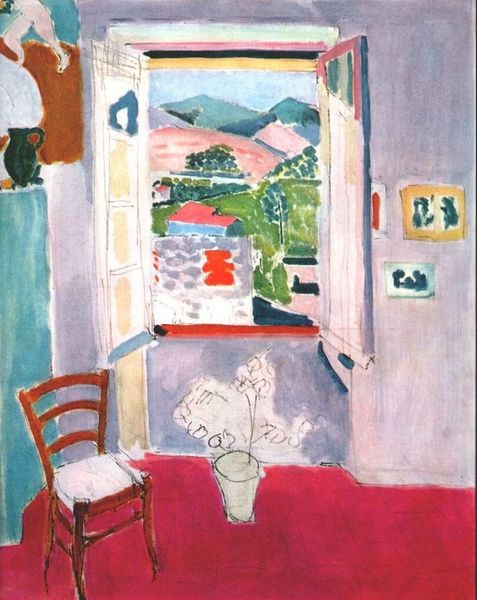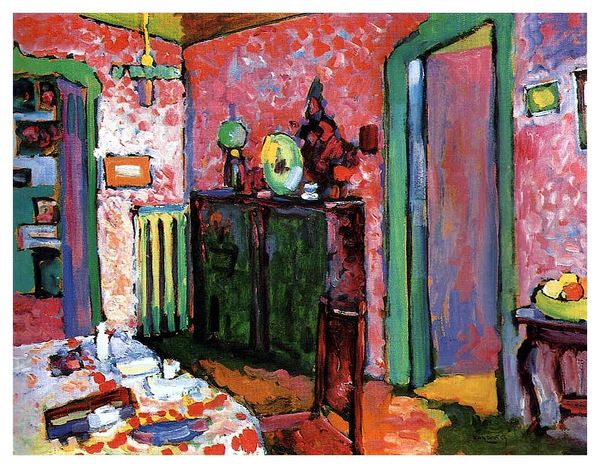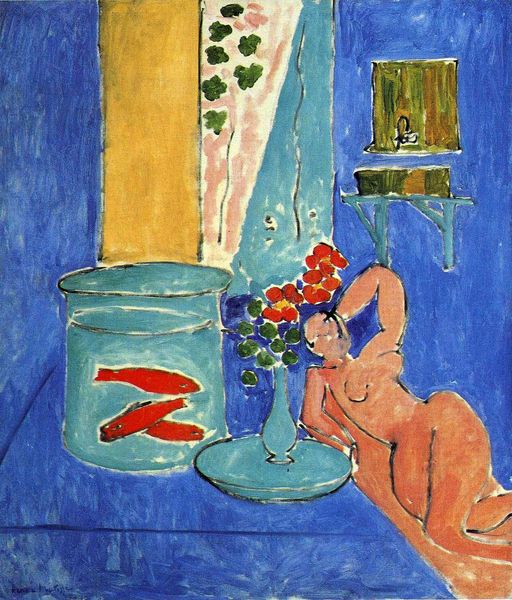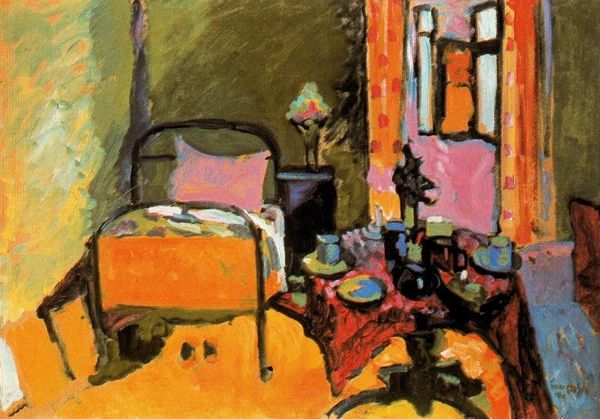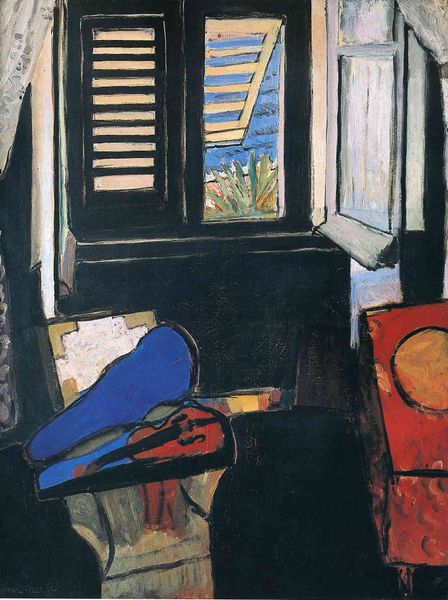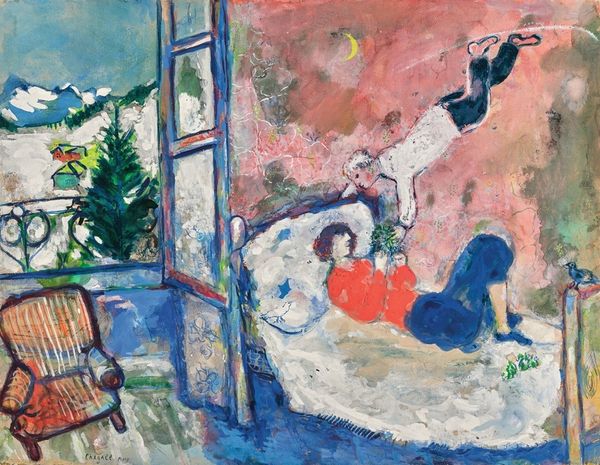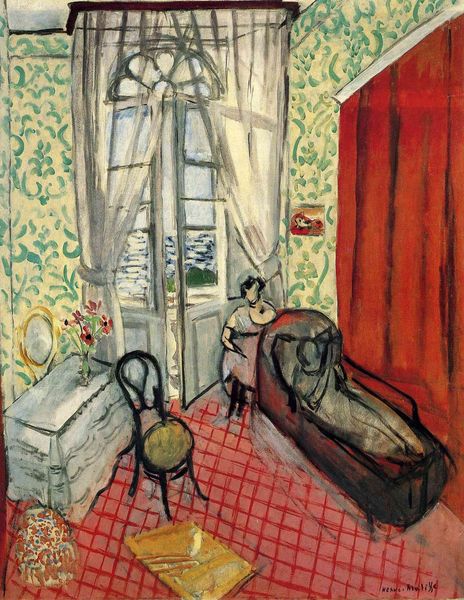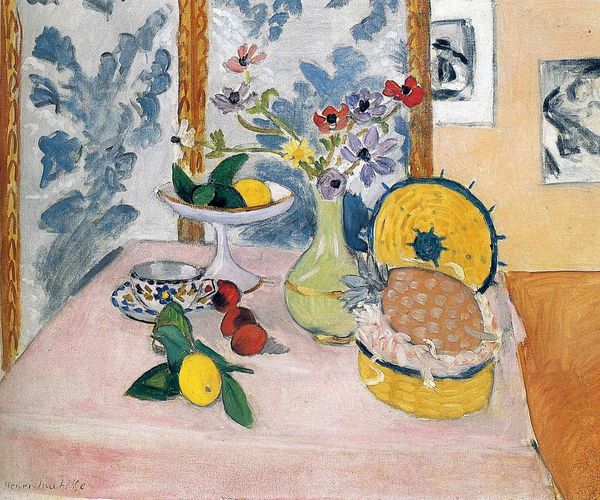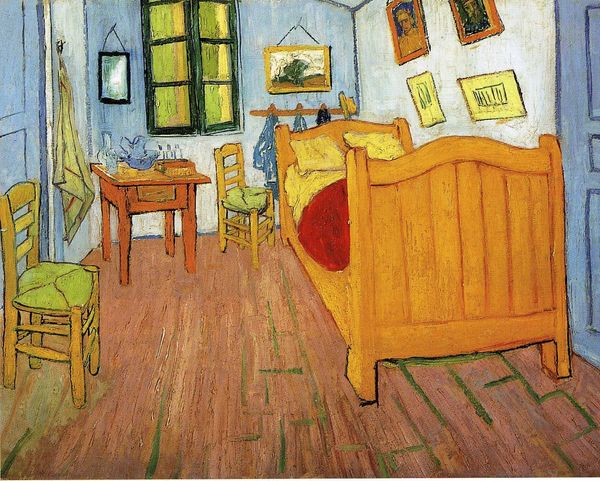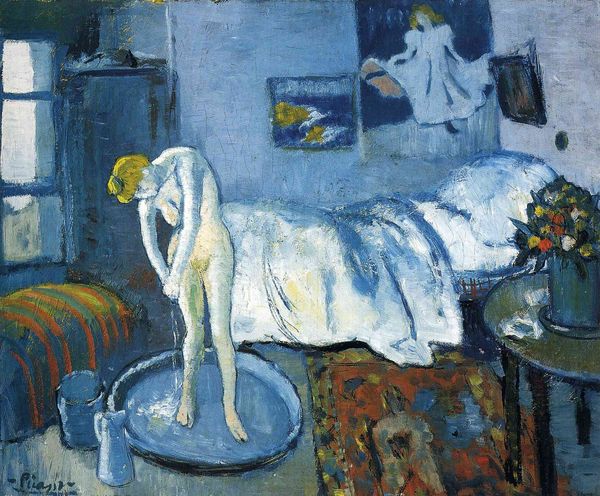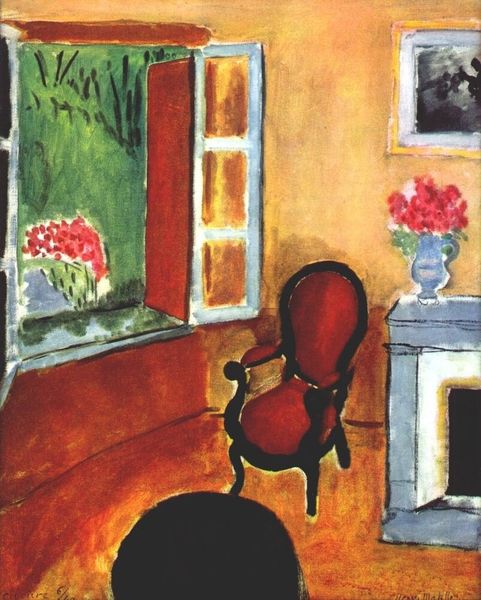
Copyright: Public domain US
Editor: So, this is Henri Matisse's "Entrance to the Kasbah" painted in 1912, using oil on canvas. I'm struck by how boldly he's used colour; it feels both vibrant and dreamlike at the same time. What do you see when you look at this piece? Curator: Observe how Matisse deploys colour not merely representationally, but structurally. Note the dominance of blue, used in varied tones to define the architecture and the distant landscape. How does the application of red in the foreground interact with this field of blue? Editor: Well, the red certainly pulls the eye forward, creating a strong sense of depth in contrast to the receding blues. Is this play between colour and depth common in his work? Curator: Precisely. And it's more than just creating depth; it's about tension. Consider the formal properties of the archway. Its rounded form, rendered in flat planes of colour, creates a frame within a frame, drawing our vision into the depicted space while simultaneously reminding us of the canvas’s surface. Do you notice how the figure is placed almost outside the structure of the portal? Editor: Yes, it almost feels separate, in its own contained space. Is he purposefully disrupting our sense of perspective and space? Curator: Precisely. Matisse challenges traditional perspectival systems by emphasizing the two-dimensionality of the canvas, liberating colour and form from purely representational constraints. Editor: That's fascinating. I had initially only noticed the colors, but looking deeper, the way the shapes play together makes the painting so much more dynamic. Curator: Indeed. By analyzing the intrinsic qualities of the work—colour, form, composition—we unlock its profound engagement with visual language and pictorial space.
Comments
No comments
Be the first to comment and join the conversation on the ultimate creative platform.
